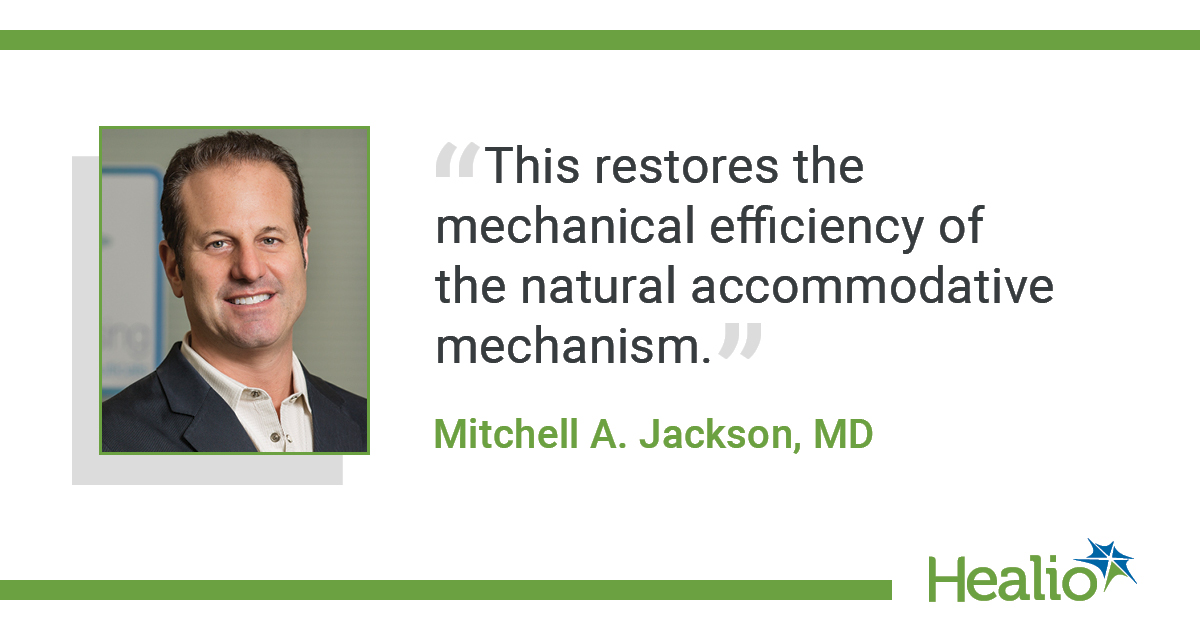Early results encouraging for laser scleral microporation in presbyopic eyes
Click Here to Manage Email Alerts
Patients with presbyopia who underwent laser scleral microporation experienced visual acuity improvements at 3 months when compared with baseline, according to a speaker at the virtual American Society of Cataract and Refractive Surgery meeting
“Preliminary results suggest laser scleral microporation performed using the Er:YAG laser to be a safe and effective procedure for restoring visual performance in all ranges of vision, including near, intermediate and distance,” Mitchell A. Jackson, MD, said.
In laser scleral microporation (Ace Vision Group), an Er:YAG laser creates a microporation in four quadrants of a 5 mm by 5 mm matrix in five anatomic zones. The individual micropores “uncross-link” the sclera and scleral myofibrils that occur with aging, he said
“This restores the mechanical efficiency of the natural accommodative mechanism, improving biomechanical mobility to achieve accommodative power,” Jackson said.

In a multicenter study of 32 presbyopic eyes of 16 patients, uncorrected and corrected visual acuity were evaluated at near, intermediate and distance at baseline and 3 months postoperatively.
At 3 months, the average binocular uncorrected visual acuity at near, intermediate and distance all showed improvement from baseline. The average binocular distance corrected visual acuity also improved for distance, intermediate and near. Patients gained a mean 0.21 logMAR in near and intermediate visual acuity at 3 months, Jackson said.
“The mechanism of action for laser scleral microporation is still being studied, but early results are compelling. Ongoing studies are being pursued,” he said.
- Reference:
- Jackson MA. Multicenter clinical trial results of laser scleral microporation in presbyopic eyes. Presented at: American Society of Cataract and Refractive Surgery meeting; May 16-17, 2020 (virtual meeting).

